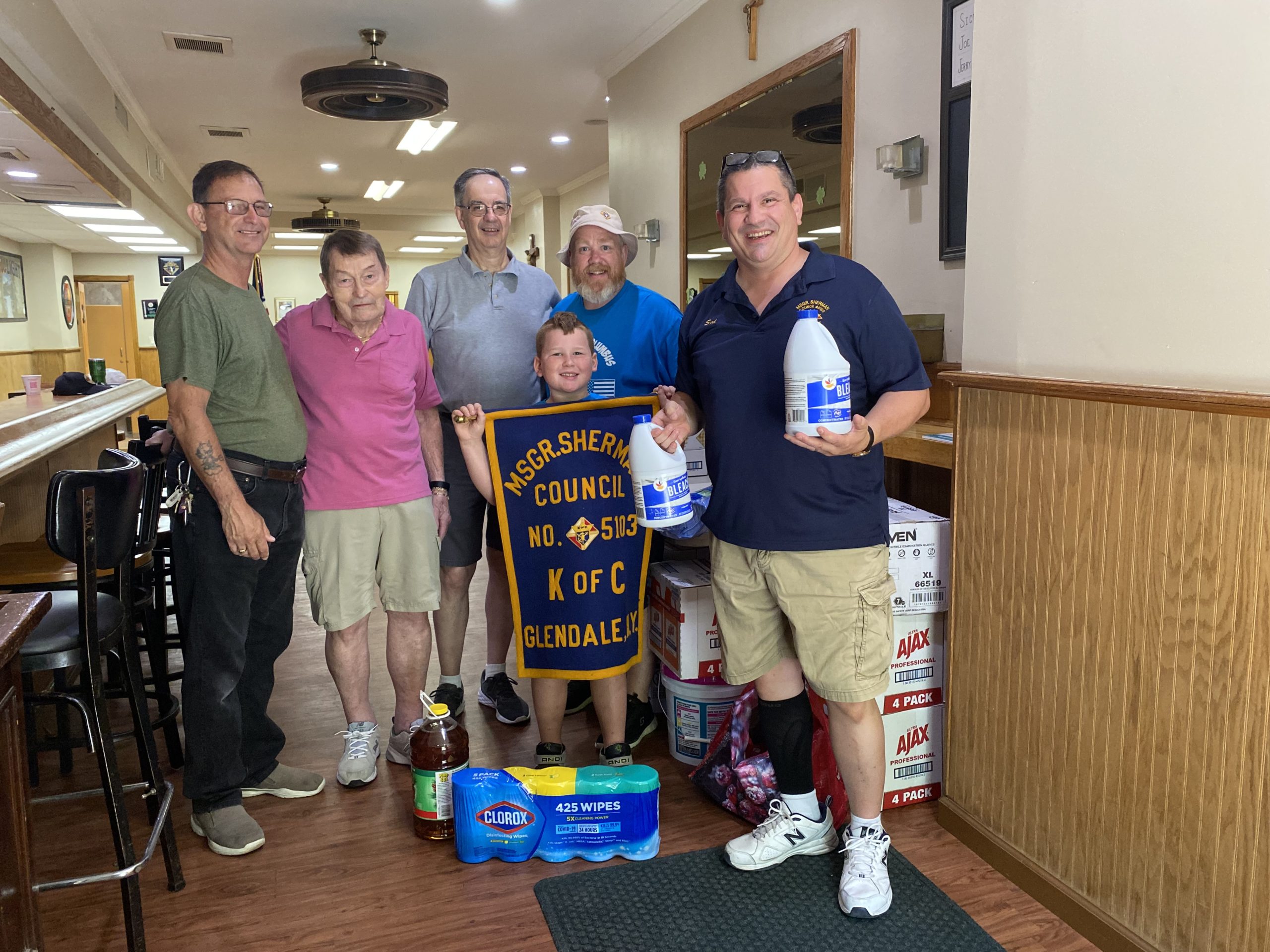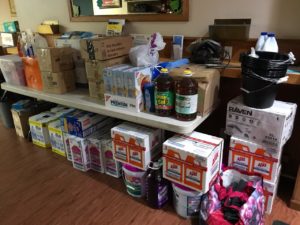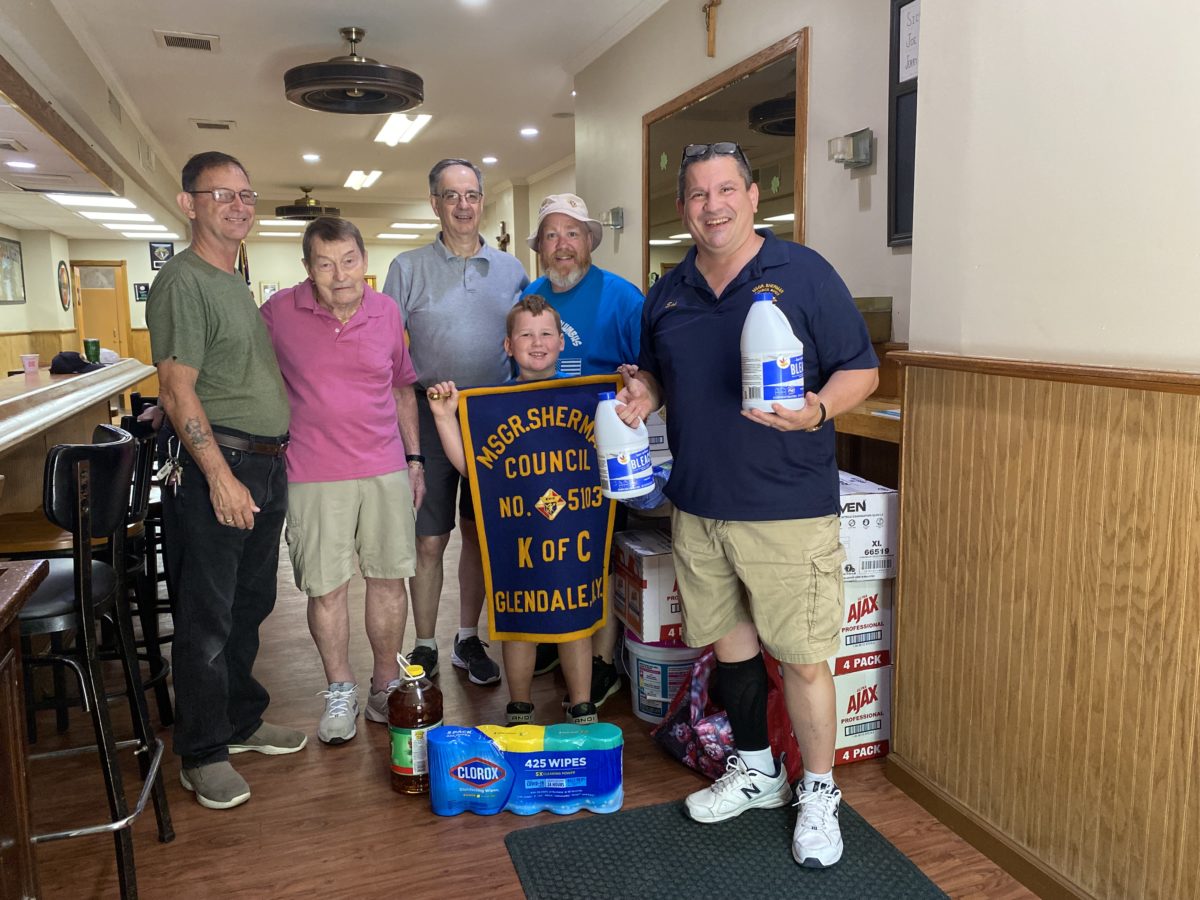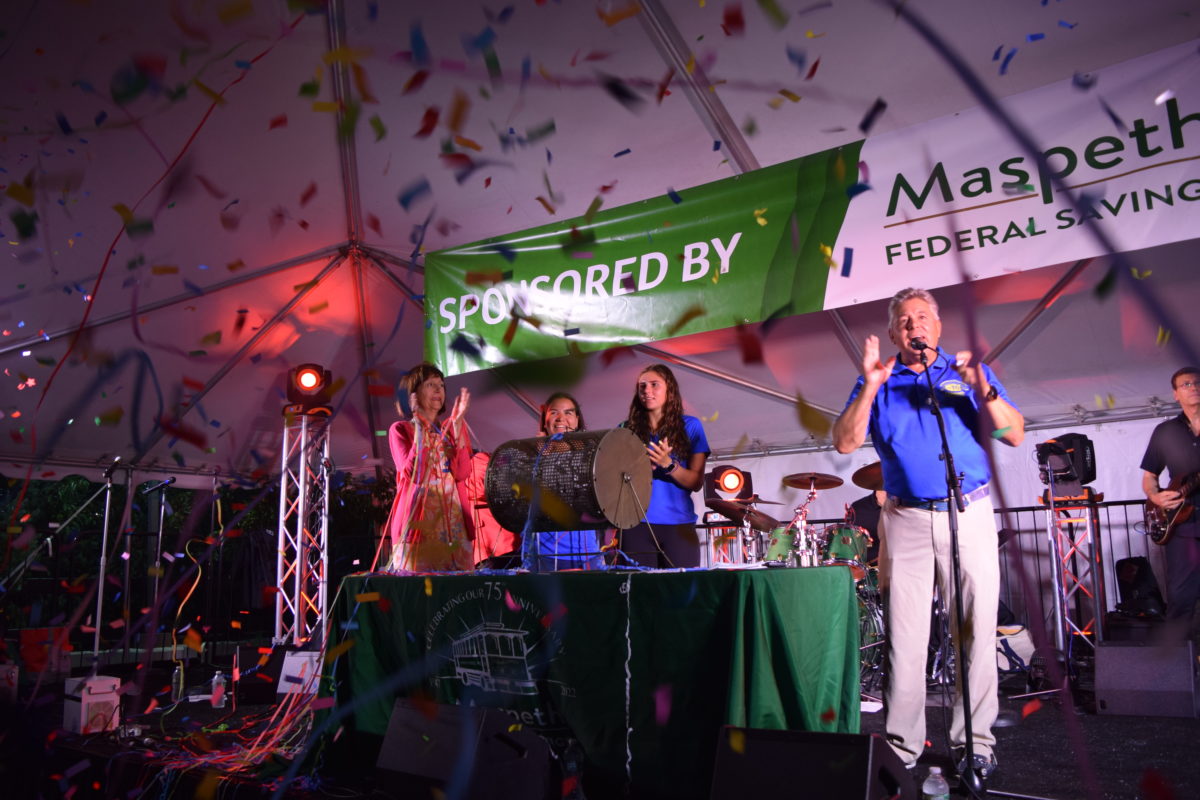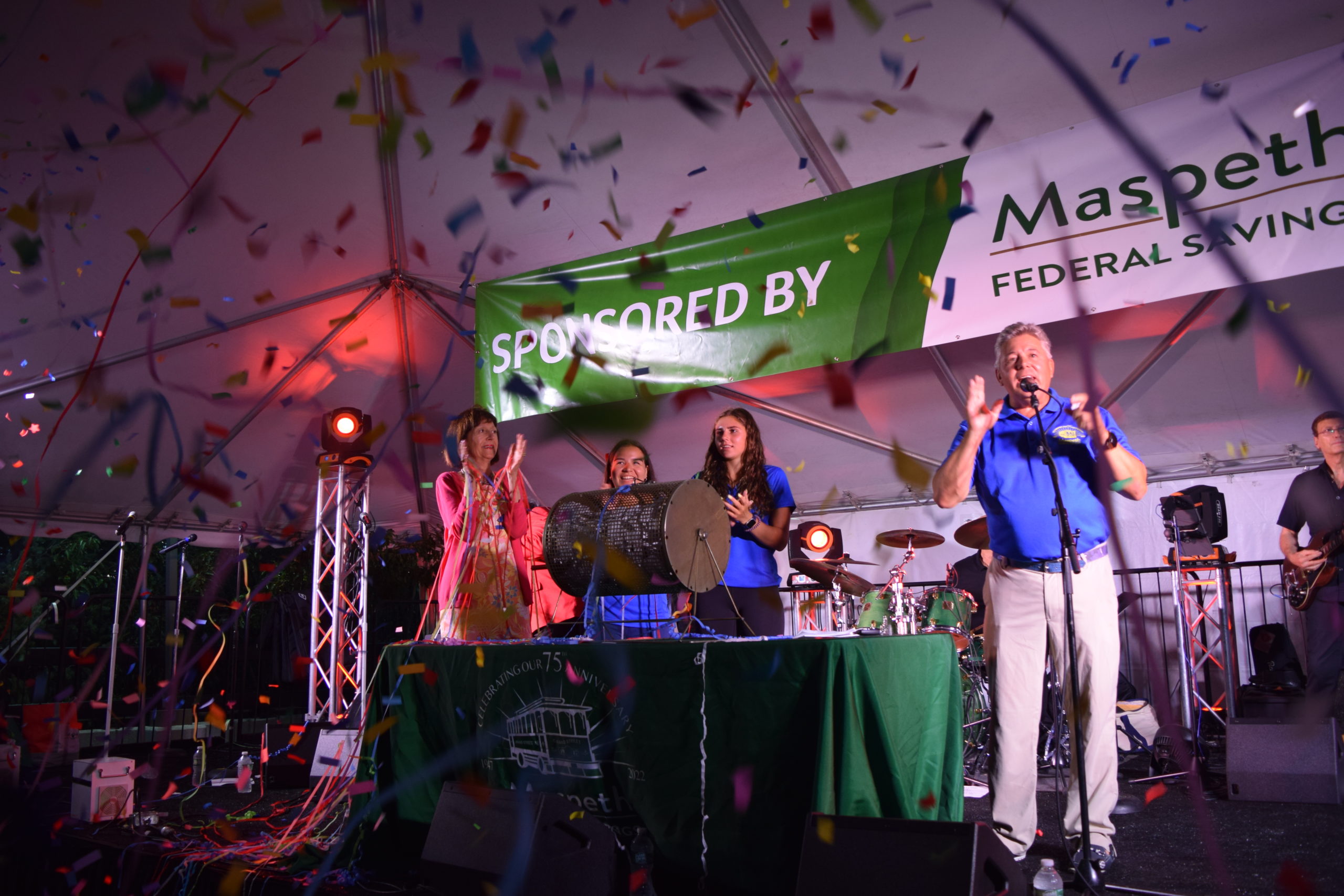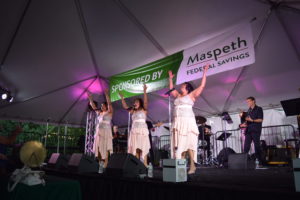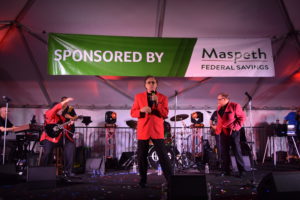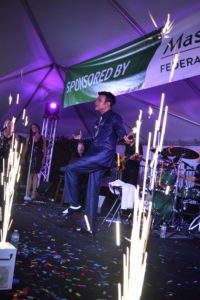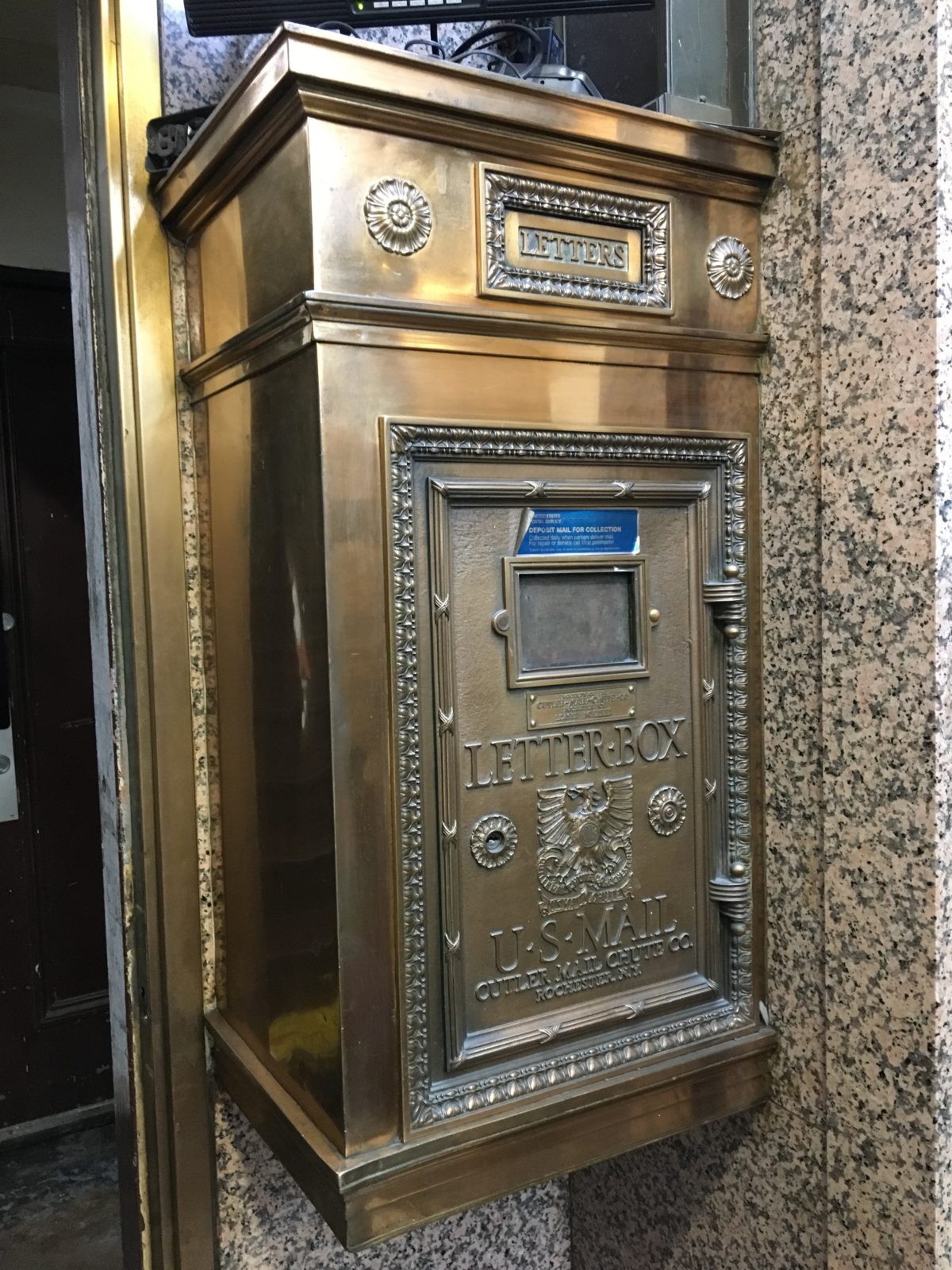Exploring the mail chutes you’ve always wondered about
By Michael Perlman
mperlman@queensledger.com
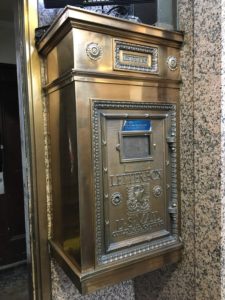
An ornate Cutler mail chute at 42 W 48th St.
Most people have passed decorative brass, bronze or stainless-steel mail chute systems in the lobbies and floors of office buildings and some residential buildings, but sometimes they are not given much thought.
Mail chutes have an impressive history that dates to the 1880s and are prized for their diverse stylistic craftsmanship, with inscriptions of the manufacturer in distinctive typography.
Most predate the 1970s.
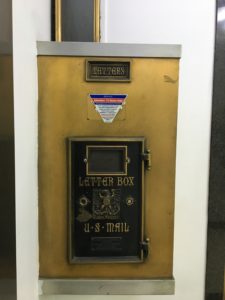
Mail chute with unusual medieval typography, 48 W 48th St.
As for younger generations, sometimes they scratch their heads.
Many mail chutes have been decommissioned and are now a conversation piece, but some remain in operation as a lobby letter box, or in fewer cases they remain in full operation throughout a building.
Mail chutes were an innovative work to ensure ease and rapidity, and it became an American success story in no time.
It all began in Rochester, NY, where it was invented by James Goold Cutler in 1883 and installed in the Elwood Building.
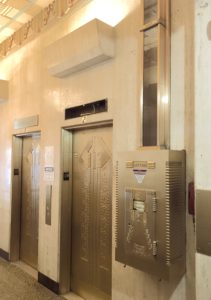
Art Deco Cutler mail chute in harmony with elevators, 71 W 47th St.
The patent indicated that the lobby mail chute needs to consist “of metal, distinctly marked US Letter Box” and the “door must open on hinges on one side, with the bottom of the door not less than 2’6’’ above the floor.”
Initially, mail chutes were largely installed in public buildings and railways, and the metal and glass shafts made their way throughout ceilings and floors.
James Goold Cutler, who was born in Albany in 1848 and passed away in Rochester in 1927, lived a diverse life.
He received his education at The Albany Academy and is remembered as a mail chute pioneer, an architect of prominent buildings, an entrepreneur and the 48th mayor of Rochester, where he served between 1904 and 1907.
In 1927, a bequest of $2,500,000 to the University of Rochester was made in his will, in addition to bequests including St. Paul’s Episcopal Church in Rochester, hospitals, the Social Welfare League of Rochester, Hillside Home for Children and the YMCA and YWCA.
He was philanthropic in character.
A Council adopted a memorial which read, “Mr. Cutler was always a most interested observer of public affairs, and his kindly nature and keen insight into the needs of the citizens early attracted him to and fitted him for rendering marked public service.”
A Rochester report dated 1888 read, “In the present age of multi-storied buildings, no builder or owner of such an edifice has all the needful and convenient appliances until the Cutler US Mail Chute is in use therein — a device necessary for the businessman as the elevator.”
The skyscraper was being born, and mail chutes were a means of large-scale efficiency.
As of 1905, the Cutler Manufacturing Co. installed an estimated 1,600 mail chutes worldwide.
An excerpt from the 1909 edition of Hendrick’s Commercial Register stated, “Our business has grown with and has been an essential feature of the development of the tall building. From the Produce Exchange, seven stories, in 1885 to the Metropolitan Tower, forty-one stories, in 1908, all the important buildings, making steps in this advance, are built around Cutler Mail Chutes. Without the elevator, this growth would have been impossible, without the mail chute thousands of business men would have been too far from the Post Office.”
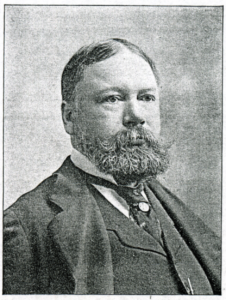
James Goold Cutler, Jan. 1, 1895.
In Forest Hills, a mail chute’s style reflects the architecture and period of the buildings, ranging from Art Deco to Mid-Century Modern.
Elsewhere, more elaborate styles include Beaux-Arts, Medieval, and Art Nouveau.
Eye-catching examples can still be found citywide in numerous destinations including the Diamond District, the Flatiron Building, Woolworth Building, the St. Regis, Empire State Building, Fred F. French Building and the Chrysler Building.
The Cutler Manufacturing Co. would team up with notable architects including Cass Gilbert, Daniel Burnham and Shreve, Lamb & Harmon.
Some significant Forest Hills apartment buildings that feature mail chutes throughout are The Leslie at 150 Greenway Terrace (1942), Booth Plaza at 67-76 Booth Street (1949), Park Crest Terrace at 101-06 67th Drive (1949), The Park Briar at 110-45 Queens Boulevard (1951), Birchwood Towers consisting of The Kyoto, The Toledo and The Bel Air on 66th Road to 67th Avenue between 102nd Street and Yellowstone Boulevard (1964), Lane Towers at 107-40 Queens Boulevard (1965) and Cord Meyer Office Building at 108-18 Queens Boulevard (1969).
Another site is a commercial-turned residential building, Lefrak Tower, renamed The Contour at 97-45 Queens Boulevard in Rego Park (1962).
In relation to Booth Plaza’s Capitol mail chute system, Gloria Piraino, a resident of the building, said, “I love those old mail chutes, and in our building, they still work.”
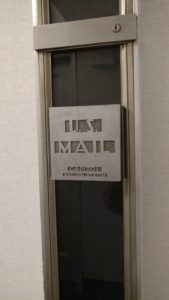
Capitol model at Booth Plaza. (Photo: Gloria Piraino)
Tammy Jacobi, board president of The Park Briar explained, “The ambiance of the hallway looks so special with the Art Deco Capitol mail chute, which meets the criteria of the Art Deco lobby. A lot of visitors have admired it.”
She pointed out that its bronze color receives treatment twice per year in conjunction with all other brass elements in the lobby.
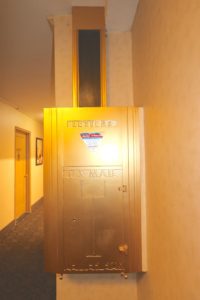
Capitol mail chute at The Park Briar.
At The Leslie, the lobby’s Cutler mail chute depicts a rare Art Deco style eagle, but unfortunately its eyes and beak is covered with a sticker, although the etched detail is making its way through.
In addition, the fine quality surface is covered with layers of paint. Residents have expressed interest in seeing its detail restored.
It is rare to have a Cutler mail chute installed in Forest Hills, since residential buildings that were erected later on in the 1940s to the 1960s more frequently have a Capitol mail chute, although the prospect of having a mail chute is few and far between.
An original framed notification on the Cutler mail chute near the elevator along the floors is dated Dec. 23, 1937, predating The Leslie’s completion.
An excerpt reads, “U.S. Mail Cutler Mailing System – Mail letters one at a time. Do not fold or attempt to crowd large or bulky letters into the chute.”
For the collections category, it states “Collection schedule card posted on receiving box in ground floor.”
“Air mail may be deposited in this chute. For any specific information consult post office,” it continued.
Vandalism and theft was seemingly rare.
It says, “$1,000 fine or three years imprisonment is the penalty for defacing this box or the chute attached thereto, or tampering with lock or contents.” Residents were advised to “mail early.”
Despite the few manufacturers that followed, the Cutler Co. is regarded as the king of mail chutes.
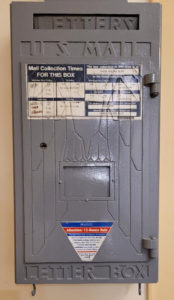
Cutler mail chute in need of restoration at The Leslie. (Photo: Alan Tullio)
A 1955 Capitol Mail Chute Corporation catalog reads, “This corporation is part of an organization of skilled bronze manufacturers who have been doing distinctive aluminum and bronze metal work since its inception in 1905, and mail chutes since 1931.”
As decades passed, the size of mail increased, and mail chutes would increasingly become clogged.
Brass details would sometimes be obscured with paint rather than polished, and in other cases the systems were removed for profit rather than valuing historic artistry.
